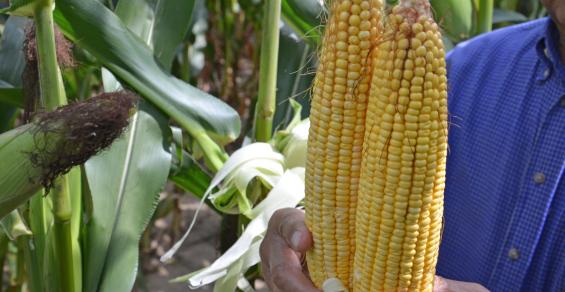Corn Illustrated: There have only been two major trend line shifts, with the last one in the 1950s.
Corn yields in the U.S. have steadily increased since 1936. That’s not news. What may surprise you is that only two major shifts in the yield trend line are documented since statistics were first published in 1866.
“I look back over this historical data from time to time and update it,” says Bob Nielsen, a Purdue University Extension corn specialist. “What I find interesting is that the steepness of the trend yield line, determined by the rate of increase per year, has only changed twice in over 150 years.
“Corn yields began going up after double-cross hybrids were introduced in the late 1930s. Then the line shifted again in the 1950s. That shift coincided with introduction of nitrogen fertilizers, early weed killers and improved production methods. However, it’s remained fairly constant around 1.9 bushels per year ever since.”
Introduction of tech traits for insect control and tolerance to certain herbicides haven’t shifted the line.
“Many of those traits are geared toward protecting yield potential, but they don’t actually increase yield potential by themselves,” Nielsen observes.
2 shifts
You’ve likely read that Henry Wallace discovered hybrid corn in the 1920s. Pioneer, Funk and Dekalb were soon selling seed. So why was the trend line still flat until 1936, with the U.S. corn yield averaging around 26 bushels per acre?
One theory is that the severe drought of the mid-1930s showcased that when stressed by drought, hybrid corn outperformed open-pollinated corn, Nielsen reports. Once farmers realized the benefits of double-cross hybrids during drought, everything changed. From 1937 through 1955, corn yields increased about 0.8 bushel per acre per year.
“The ‘second miracle’ started in the mid-1950s, with improved genetics, nitrogen fertilizer, pesticides, mechanization, and overall improved soil and crop management practices,” Nielsen says. “The annual rate of corn yield improvement more than doubled to about 1.9 bushels per acre per year, setting a new course for the trend line.”
While the trend line hasn’t shifted to a higher trajectory since, credit is due to plant breeders for yield continuing to increase, rather than flattening out or trending down, Nielsen acknowledges.
“Perhaps biotech traits played a role in helping yields continue to stay on trend, but it goes much further than just GMO traits,” Nielsen says. “Improved genetics and better agronomic practices are also extremely important.”
Next shift?
If farmers are to feed the projected world population in the next 30 years, a new shift in the trend line could be important.
“I don’t know yet where that’s going to come from,” Nielsen says. “We hear a lot about biologicals, but they’re more geared toward replacing some inputs, like nitrogen, than raising yield. Plus, so far, there isn’t sufficient scientific evidence documenting how much current products help.”
Some companies deep into gene editing hint at searching for yield genes.
“It’s more likely that they may come up with pathways that lead to increased efficiency in photosynthesis or other processes,” Nielsen says. “Whether these advanced techniques used to aid plant breeders result in gains big enough to shift the yield trend line remain to be seen.”
To learn more about historical trends of corn yields, check out this article.




